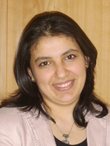Biography:
Ziyad S. Haidar is a Full Professor of Biomaterials and Tissue Engineering and the Scientific Director of the Faculty of Dentistry, Universidad de los Andes in Santiago de Chile. Concurrently, he is the Founder and Head of the Biomaterials, Pharmaceutical Delivery and Cranio-Maxillo-Facial Tissue Engineering Laboratory/Research Group (BioMAT'X Chile; please visit: http://www.uandes.cl/facultad-de medicina/biomaterials-pharmaceutical.html). Haidar also serves as the Head of Innovation at the Centro de Investigación e Innovación Biomédica and a Faculty member in the Doctoral Program (BioMedicine) at the Facultad de Medicina. He is a Visiting Professor at several institutions, such as the Division of MaxilloFacial Surgery at the Universidad de la Frontera in Temuco. Haidar is a trained dentist, implantologist and an oral and maxillofacial surgeon with a PhD in nanobiomaterials, pharmaceuticals and tissue engineering from McGill University, Montréal, Canada. He is an international speaker with more than 125 publications, conference proceedings, text-books and patents and is an editorial board member of several national and international peer-reviewed scientific journals / periodicals.
Abstract:
Statement of the Problem: Despite significant improvements, in reconstruction techniques and materials, during last decades, the regeneration, restoration and/or repair of oro-dental and maxillo-facial defects remains a challenge. Platelet Concentrates (PCs) are autologous blood extracts obtained through centrifugation of whole blood samples. The preparation procedure allows the gathering and concentration of platelets and other therapeutic blood constituents (fibrinogen/fibrin, growth factors, leukocytes and circulating cells), in clinically-usable preparations (surgical adjuvants), which may enhance, accelerate and promote tissue (hard and soft) wound healing and regeneration. Despite promising clinical observations, their overall effectiveness remains debated, to date. Today, it can be safely stated that, in oral and maxillofacial surgery, the Leukocyte and Platelet-rich Fibrin (L-PRF) sub-family is receiving the utmost attention, mainly due to simplicity, user-friendliness, malleability and potential cost-effectiveness, yet with outcome unpredictability.
Aims: Prepare, characterize, and evaluate a novel L-PRF bioscaffold incorporating human gingival mesenchymal stem cells and natural polymer-based nanoparticles capable to induce in situ healing and de novo local bone formation for its potential clinical application as a dental extraction socket preservation alternative strategy, immediately post-exodontia.
Materials and Methods: The resulting bioscaffold was characterized for its physico-chemico-mechanical and cytocompatibility/osteogenic properties, in vitro, followed by biocompatibility, malleability and efficacy, in vivo, in a challenging critical-sized defect model in the crania of normal WISTAR rats. Timely bio-distribution assays were performed. Histopathological, histomorphometrical and immunohistochemical evaluation and analysis followed.
Findings: Together, the results obtained show that is possible to formulate a safe, stable and biodegradable bioscaffold with intrinsic osteogenic potential as an advantageous alternative strategy for bone repair and regeneration.
Conclusion & Significance: Autologous L-PRF is often associated with early bone formation and maturation; accelerated soft-tissue healing; and reduced post-surgical pain, edema and discomfort. Indeed, measurements of volumen, density and area of the newly-formed bone in the defects together with the clinical observation of animals, showed a significant increase on the quantity and quality of the new bone when the defects were filled with the bio-scaffold, when compared to controls. A better analysis of rheological properties, bio-components and bioactive function of the nanoL-PRF preparation would enhance the cogency, comprehension and therapeutic potential of the reported findings; a step closer towards a new era of “super” oro-dental and maxilla-facial biomaterials and tissue engineering scaffolds.




















